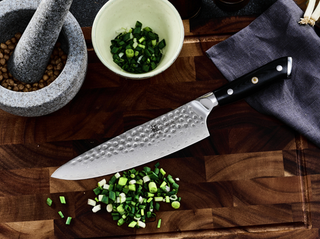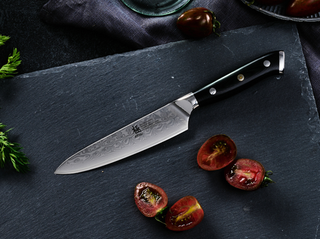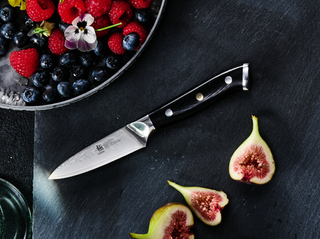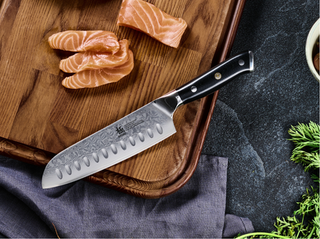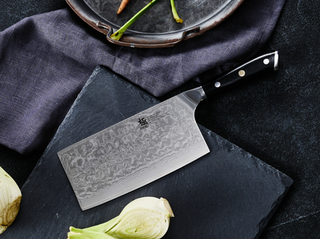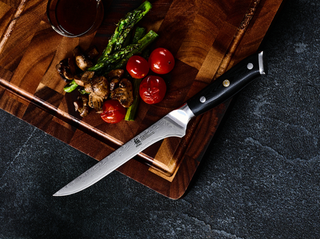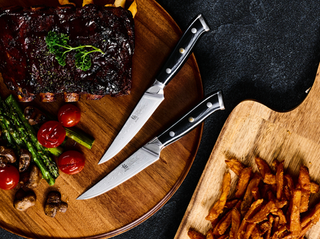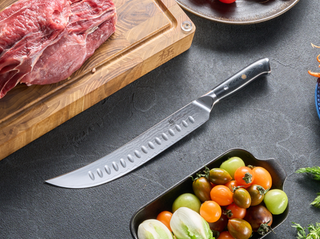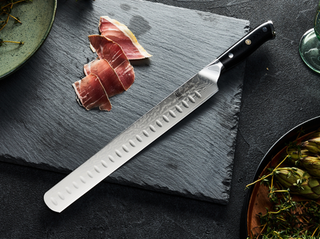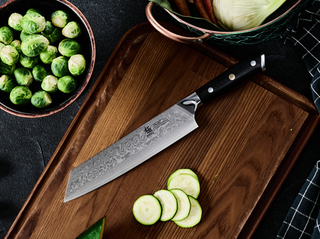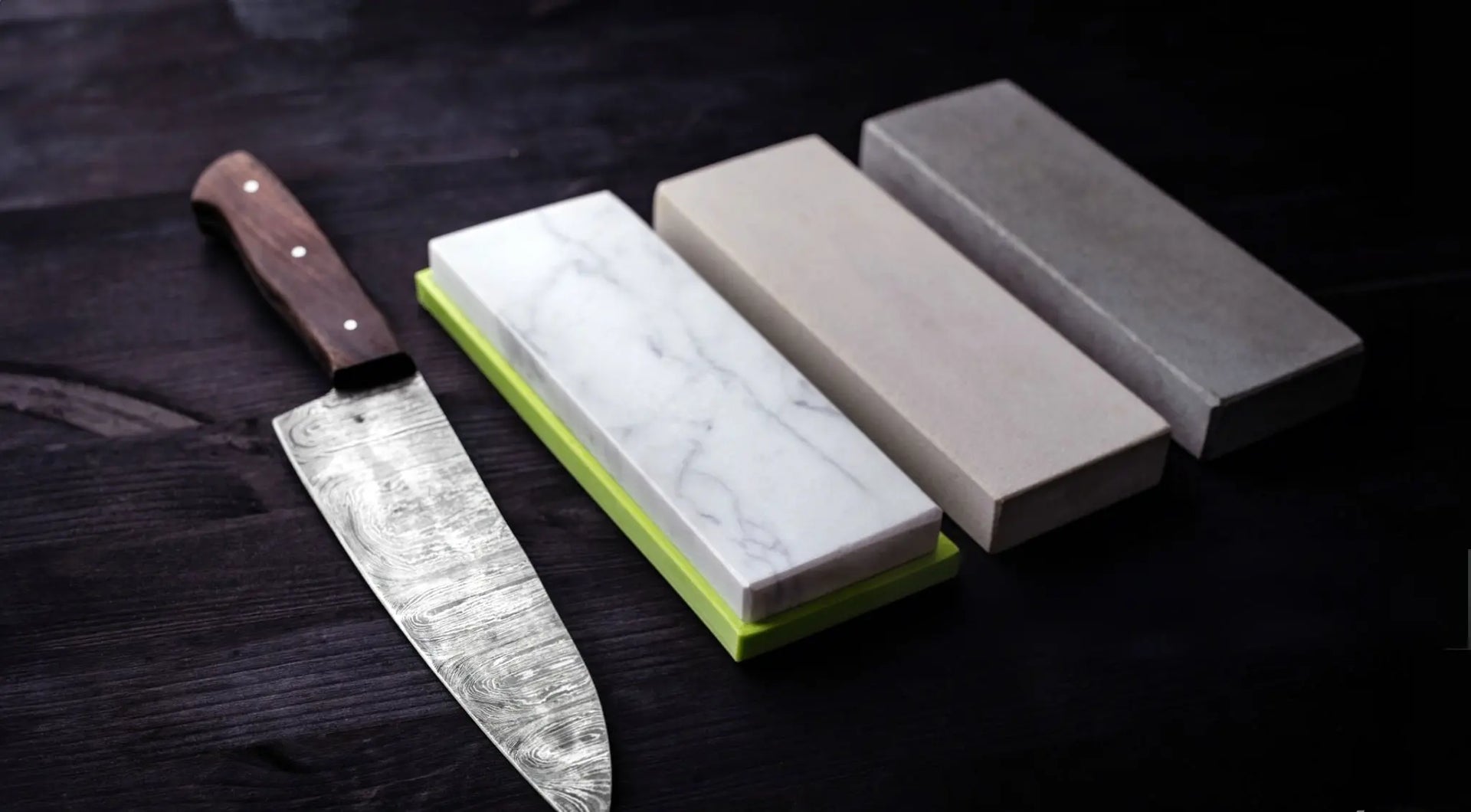A whetstone is simply a stone used to sharpen knives and other steel tools.
These rectangular blocks have tiny abrasive particles that grind away metal to create a sharp edge. Despite having "whet" in the name (which means to sharpen), whetstones can be used with either water or oil to help with the sharpening process.
Whetstones hold a high position in Japanese cooking, where chefs need incredibly sharp knives for precise cutting. Learning about different whetstones and how to use them correctly can help keep your kitchen knives in top shape and last for years.
1. Types of Whetstones

Whetstones come in two main types: natural and synthetic (man-made). Each has its own benefits for different sharpening needs.
Natural Whetstones
Natural whetstones are dug from the earth and have been used for hundreds of years:
- Arkansas Stones: Made from a special rock called novaculite found in Arkansas mountains. These hard stones work great for fine sharpening.
- Belgian Coticule: Famous yellow-gray stones that people have valued since Roman times. They often come paired with "Belgian Blue" stones in naturally layered blocks.
- Japanese Natural Stones: Called "Tennen Toishi" in Japanese, these stones have fine particles in clay. Famous ones come from near Kyoto, with varieties like Ohira, Nakayama, and Hakka stones that knife enthusiasts love.
People often collect natural stones not just for sharpening but also because they look beautiful and each one is unique.
Synthetic Whetstones
Synthetic whetstones are factory-made with consistent particles, which makes them more predictable:
- Aluminum Oxide Stones: Also called India stones or waterstones, these are common and work well for most knives.
- Silicon Carbide Stones: These cut quickly and work well for the first stages of sharpening really dull knives.
- Ceramic Stones: These create a very fine edge and are often used for finishing touches.
- Diamond Plates: Metal plates coated with diamond particles that cut very quickly and stay flat. These are great for fixing really dull knives and for flattening other whetstones that have worn down.
2. Water Stones vs. Oil Stones

Whetstones are also grouped by what liquid you use with them:
Water Stones
Water stones (or waterstones) use plain water as a lubricant:
- Japanese Waterstones: These create a muddy slurry while sharpening that helps polish the blade. They work faster than oil stones but wear down quicker too.
- Synthetic Waterstones: Available in many different grits from rough to super-fine, these have become popular because they're easy to use and work quickly.
Water stones need soaking before use and clean up easily with just water.
Oil Stones
Oil stones use mineral oil or honing oil as a lubricant:
- Arkansas Stones: Traditional American oil stones that create very smooth edges.
- India Stones: Man-made stones that typically work best with oil.
Oil stones generally work more slowly than water stones but keep their flat shape longer.
3. What is Grit Sizes
Whetstone grit sizes tell you how coarse or fine the stone is, which affects how quickly it removes metal and how smooth it makes your knife:
- Coarse Grits (200-800): Used for fixing damaged edges or sharpening very dull knives. These work quickly but leave visible scratches.
- Medium Grits (1000-3000): Good for regular sharpening. A 1000-grit stone will make your knife sharper than when you first bought it.
- Fine Grits (4000-8000): Create very sharp edges perfect for precise cutting. Japanese chef knives usually benefit from these finer stones.
- Ultra-Fine Grits (10,000+): Used for polishing edges to a mirror finish, especially for sashimi knives.
Japanese whetstones often use a different system with three main types:
- Ara-to (rough stone): About 500-1000 grit
- Naka-to (middle stone): About 3000-5000 grit
- Shiage-to (finishing stone): About 7000-10000 grit
4. Japanese Whetstones in Cooking
Japanese cooking puts a huge emphasis on knife skills and blade quality. This has led to special whetstones that support Japanese cooking needs:
What Makes Japanese Whetstones Special
Japanese whetstones typically:
- Create a muddy slurry during sharpening that helps polish the blade
- Cut faster than Western-style stones
- Make extremely sharp edges needed for precise Japanese knife techniques
- Come in very high grit ratings for final polishing
Traditional Japanese kitchens often use several stones in order, starting with coarser ones and moving to finer ones to get the perfect edge.
5. How to Use a Whetstone

Using a whetstone effectively isn't complicated but does take a little practice:
- Get Ready: For waterstones, soak the stone in water for 5-15 minutes until no more air bubbles come out. For oil stones, put a small amount of honing oil directly on the surface.
- Set Up: Place the stone on a damp towel or stone holder so it doesn't slip.
- Find the Right Angle: Hold the knife at a steady angle—about 15-20 degrees for Japanese knives or 20-25 degrees for Western knives.
- Sharpen: Using moderate pressure, draw the blade across the stone in a sweeping motion, making sure to sharpen the entire edge. You can either switch sides after each pass or complete one side before doing the other.
- Work Your Way Up: Start with a coarser stone if the knife is very dull, then move to finer stones to refine the edge.
- Test It: Check sharpness by carefully slicing paper. A sharp knife will cut smoothly without tearing.
If you are curious about more detail about how to sharpen a knife with whetstone, click the link the read more.
6. Taking Care of Your Whetstone
Whetstones need some maintenance to keep working well:
- Flattening: With use, whetstones develop dips in the middle. Flatten them using a flattening stone, diamond plate, or sandpaper on a flat surface. [Reference: "How to flatten sharpening stones", Wood]
- Cleaning: After use, clean waterstones with water and oil stones with mineral oil.
- Storage: Keep stones in a dry place after cleaning. Some waterstones can be stored in water between uses, but check what the manufacturer recommends.
7. Common Questions About Whetstones
Do I need multiple whetstones?
For basic kitchen knife care, a combination stone with a medium grit (1000) on one side and a fine grit (6000) on the other usually works well. Professional chefs or people with expensive Japanese knives might want a more complete set.
How often should I sharpen my knives?
This depends on how much you use them. Professional chefs might sharpen weekly, while home cooks might only need to sharpen every few months. Using a honing rod between each sharpening helps maintain the edge.
Are diamond stones better than traditional whetstones?
Diamond stones cut very quickly and stay flat, which is convenient. However, they cost more, and some knife enthusiasts prefer the refined edge that comes from finishing on a traditional whetstone.
8. Conclusion

Whetstones are essential tools for keeping knives sharp and effective, especially in Japanese cooking where knife quality directly affects food preparation. By understanding the different types of whetstones, appropriate grit sizes, and proper sharpening techniques, you can really improve your knife maintenance and cooking experience.
Check out Kyoku's collection of premium Japanese whetstones, carefully designed with the perfect grit combinations to maintain razor-sharp edges on your blades. You can also browse our selection of authentic Japanese knives – from versatile Santoku to precision Nakiri vegetable knives.
Your kitchen deserves nothing less than the perfect pairing of premium Japanese knives and the whetstones designed to keep them performing at their best!
